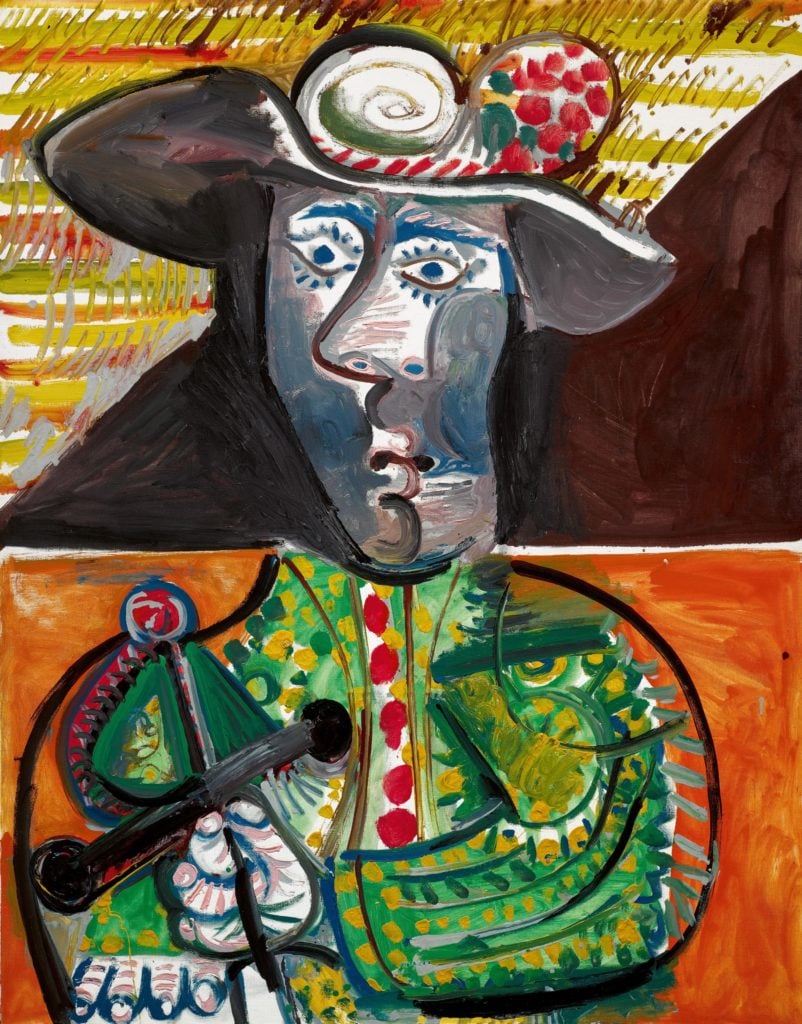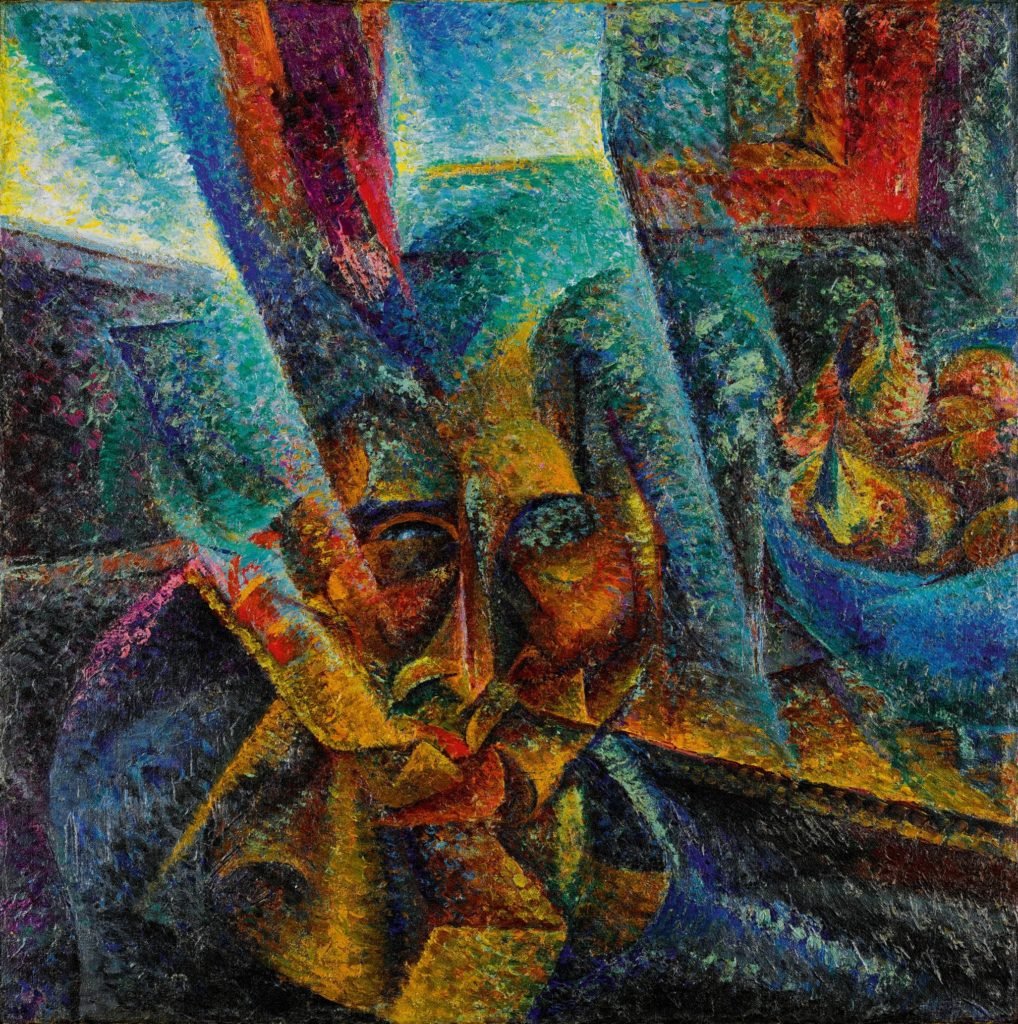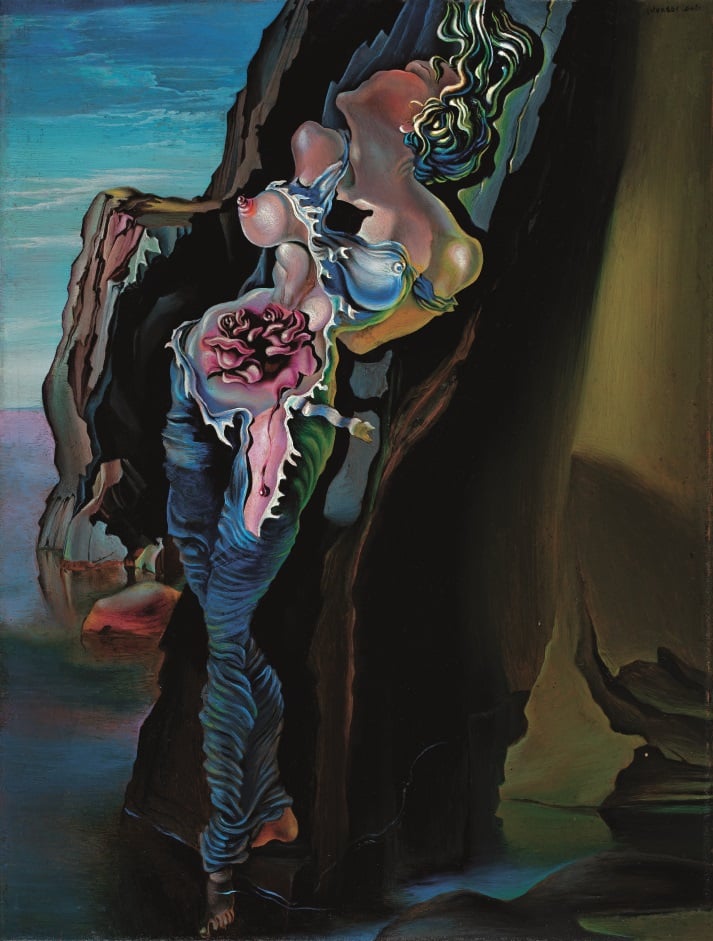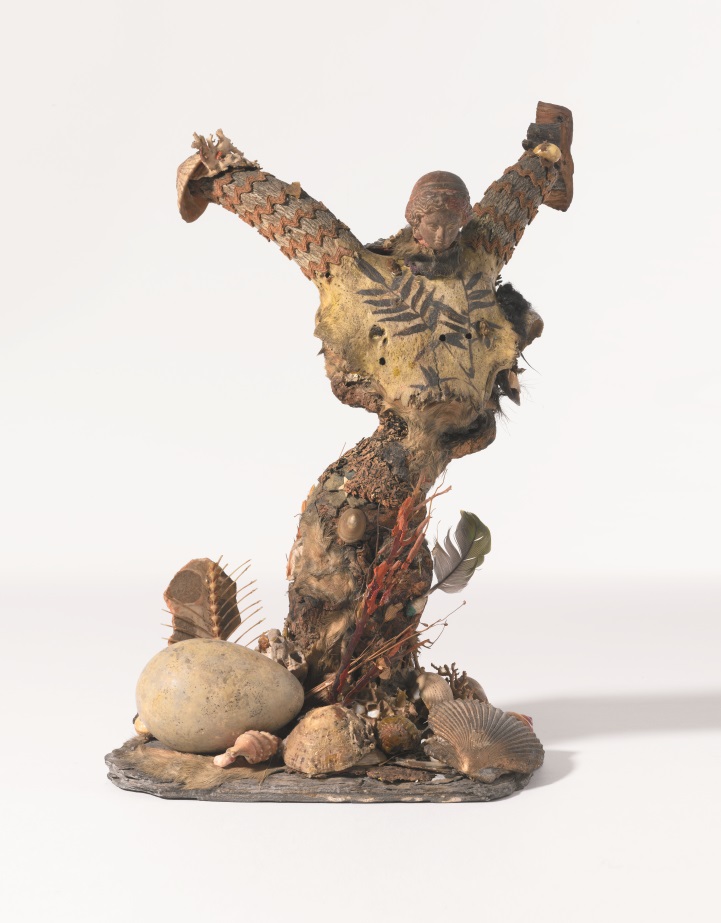Auctions
A Petite $69 Million Picasso Leads Sotheby’s Solid $189 Million Impressionist Sale in London
The portrait of Marie-Thérèse Walter is now the second most expensive work ever sold at auction in Europe.

The portrait of Marie-Thérèse Walter is now the second most expensive work ever sold at auction in Europe.

Whether Sotheby’s was being considerate about clients’ dinner arrangements, focused on securing only the most expensive lots, or just lacking a critical mass of material, the auction house followed Christie’s marathon 97-lot sale on Tuesday with a svelte 47 lots of Impressionist and Modern art on Wednesday evening. The sale fetched £136 million ($188.9 million).
The most notable development: Harry Smith, the chairman of the art appraisal and advisory firm Gurr Johns, continued his buying streak, picking up all four Picassos on offer for a total of £73.8 million ($102.4 million). At Christie’s the previous night, Smith spent more than £40 million on Picassos.
The evening’s pre-sale estimate of £101.6–126.4 million was lower than last season’s £150–197 million, but the £136 million result was a good sign of the strength of the market. (All prices include the buyers’ premium; pre-sale estimates do not.) The total put Sotheby’s behind Christie’s, which brought in £149.6 million in its equivalent sale this week.
Sotheby’s, however, boasted the highest valued lot of this season’s London sales: Picasso’s small Femme au béret et à la robe quadrille (1937), a boldly colored, angular portrait of his muse Marie-Thérèse Walter. Estimated at £36 million, it carried a third-party guarantee.
The Picasso market was in rude health earlier this week at Christie’s, so the question was not whether the painting would sell, but who would buy it.
After snapping up at least seven Picassos at Christie’s, Gurr Johns’s Smith was a likely contender. (For whom was he buying all these Picassos? One theory was that, as he was sitting with his Middle Eastern consultant, the client might have been from the Middle East.)

Pablo Picasso’s Le Matador (1970). Image courtesy of Sotheby’s.
This evening, Smith was at it again—but not quite so conspicuously. Nestled in the third row, away from the prying eyes of the press, he had a paddle number, but never waived it.
Although an Asian client bidding through Sotheby’s Patti Wong and New York dealer Nick Acquavella both pursued the Marie-Thérèse painting, Smith—just to keep everyone guessing—called on the services of Sotheby’s Russia chairman Mark Poltimore to make the winning bid on the telephone, even though he was in the room.
The final price for the picture, after fees, was £49.8 million ($69.2 million), the second highest price ever paid for a work of art sold at auction in Europe. (First place is held by Giacometti’s Walking Man, which made £65 million in 2010.)
Without much competition, Smith also claimed Picasso’s equally colorful late portrait, Le Matador (1970), which was guaranteed and carried an estimate of £14–18 million, for £16.5 million ($22.9 million).
A third Picasso, a 1963 portrait of his then-wife Jacqueline Roque, was being sold by Liana Mavrommatis, the sister of the collector Dimitri Mavrommatis, who had acquired it in 1998 for $947,500. Smith beat out the Nahmad art dealing family to secure the painting for £6.4 million ($8.8 million)—a sweet return.

Pablo Picasso’s Tête de Femme (1963). Photo courtesy of Sotheby’s.
What was to have been a battle between two Fauve paintings by André Derain became a no-contest when Christie’s withdrew his view of Waterloo Bridge from the previous evening’s sale. There was no arguing that Sotheby’s work, Bateaux à Collioure (1905), was a far better picture. It is very similar to a larger, more finished version owned by the Merzbacher Foundation, which cost nearly £7 million back in 1989.
Estimated at £7.5–10 million with a third-party guarantee, Sotheby’s Derain had previously been sold in 2011 for £5.9 million. (Thomas Seydoux, who was working at Christie’s at the time, placed the winning bid, presumably on behalf of one of his Russian clients.) This time around, the Derain sold for £10.9 million ($15.1 million) to Acquavella Galleries, which beat out several bidders, including advisors Beaumont Nathan.

André Derain’s Bateaux à Collioure (1905). Image courtesy of Sotheby’s.
A fourth guaranteed work was the Cubo-Futurist composition by Umberto Boccioni, Testa + luce + ambiente (1912). It had never been at auction before and was estimated at £5.5–7.5 million. The government would not permit such national treasures to be sold outside of Italy now, and this was the highest estimate ever placed on a work by an Italian Futurist.
Acquavella, which had its eye on the majority of top lots this evening, pursued the painting until it sold to an American telephone bidder for a record £9.1 million ($12.6 million). Boccioni’s previous record stood at £1.3 million.

Umberto Boccioni’s Testa + luce + ambiente (1912). Image courtesy of Sotheby’s.
Another record was set when a large 1977 sculpture of a pair of cloaked figures by British artist Lynn Chadwick sold way above the £600,000 low estimate for £2.5 million. The price was a surprise for an oversized sculpture on a clichéd theme by an artist whose earlier work from the ‘50s is much more challenging.
After realizing £119 million for its Impressionist and Modern art section, just slipping ahead of Christie’s £113.6 million total for the same category, Sotheby’s then offered a catalogue of 21 Surrealist works. All but three sold to bring in an additional £17 million. The total for the Surrealist trove was toward the high end of the pre-sale estimate, but £19 million less than Christie’s own total for its Surrealist works.

Salvador Dalí’s Gradiva (1931). Image courtesy of Sotheby’s.
As at Christie’s, Asian interest was high for the Surrealists. A buyer from the region outgunned dealer Olivier Malingue for Gradiva (1931), a tiny painting by Salvador Dalí once owned by a Brazilian countess and never before on the market. It sold for double its estimate at £2.7 million ($3.7 million). The same Asian buyer prevailed over bids from Malingue and the Beaumont Nathan advisory team to secure Dalí’s Maison Pour Érotomane (1932) for £3.5 million ($4.9 million).

Eileen Agar’s The Wings of Augury (1936). Image courtesy of Sotheby’s.
American bidding power was out in force when the New York-based advisor Mary Hoeveler picked up René Magritte’s La Perspective Amoureuse (1936) near its high estimate for £1.4 million. But she was outgunned at the end of the sale, when a 1936 sculpture made from flotsam and jetsam found on the Jurassic coast of Dorset by Eileen Agar—one of the British artists often written out of the Surrealist story—sold to a phone bidder for a record £72,500.